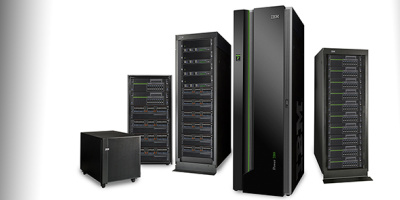One of my friends constantly says he's going to write a self-help book about personal motivation. He's reviewed the available literature, devised a set of principles, and wants to share his philosophy with the world through books, cassettes, videotapes, and seminars.
This got me thinking that I would like to write a self-help book about running a network for AS/400 managers. While some people believe network management can be learned only on the job, I believe there are general principles you can follow to make managing the network maze easier. For starters, I would offer the following eight (well, maybe nine) guidelines for planning, implementing, maintaining, and upgrading a network.
o Expect to have a heterogeneous server environment. You cannot expect one server to meet all your needs. Your AS/400 may continue to store your production database and run your business processing; NT may be brought in for PC-based application serving and new custom applications; and Novell will probably survive as a print and file server. This is not and will not be unusual. Use the best machine for the job.
o Centralize intelligently. Centralize your data-even if your applications are on different servers- and make sure it has more than appropriate backup. Application serving (or software centralization) also makes sense under the right circumstances. CAD, animation, and other high- CPU, high-memory software may not be good candidates for an application server, but word processing, spreadsheet, email, and other basic business software will run just fine.
o Mix and match your desktop environment. Avoid trying to be an all-PC or all-NC environment. Instead, deploy the appropriate solution as needed. For clerks who access only AS/400 data, email, and the Internet, a network computer is appropriate. But graphic designers and CAD users need high-end PCs with screaming graphics, tons of RAM, and other goodies.
o Do not be afraid to skip or delay implementing an upgrade. Remember V3R1? How about the
early edition of Windows 95? Too often, new software releases are thinly disguised beta versions that need two or three service packs (bug fixes) to get them right. Do not be afraid to be on the trailing, rather than the leading, edge of software. Wait for a stable product. Be aware, however, that this philosophy can backfire. Vendors can unexpectedly drop support for products. Like throwing hand grenades or weaving through traffic, software upgrade timing can be everything.
o Where appropriate, consider leasing PCs, NCs, and servers (including AS/400s) instead of buying them. The computer price/performance curve-where performance doubles every 18 months for the same price-refuses to change. For high-end equipment, you may need to lease to ensure you can easily upgrade and change equipment as your needs change. Hardware, as well as software, can radically change from version to version. For capital equipment that can be considered commodities-such as modems, desktop printers, and most items under $1,000 (U.S.)you may still want to buy instead of lease. These items are easily replaced, and the cost of a lease may be inappropriate compared to the cost of a replacement or upgrade. However, for the higher cost, higher profile items-such as AS/400s, beefed up applications and file/print servers, and communications equipment-leasing may be more appropriate, as increased demand forces you to upgrade on a regular basis.
o Be aware of "infant mortality" and buy extended warranties when warranted. According to some estimates, up to 5 percent of new computer equipment is defective, resulting in a very high infant mortality rate. Most manufacturers are good about replacing defective parts inside the warranty period. Typically, if a new computer is going to fail, it will fail early. If possible, test every component that comes with your systems, even if you are not going to use them immediately. Nothing is worse than finding a defective part after the warranty expires. Three- year on-site warranties are fairly reasonably priced, usually less than 5 percent of the purchase price. Build an on-site warranty into your networking capital requests.
o Constantly question and reevaluate vendor pricing and service. Given the free-fall PC prices took last year, you should get new quotations on equipment if your existing quotes are more than a month or two old. Make it a goal not to pay too much for existing technology. Also, watch your vendors. I have found that it helps to change PC vendors every 18 to 24 months-the same time period as the computer price/performance curve-because of changes in capacity, salespeople, new product categories, quality concerns, and the fact that they take you for granted if you buy from them too long. It also helps to have a secondary vendor lined up if you run into performance or legal issues.
o Avoid long-term contracts. Beware of getting locked into long-term contracts (more than two years) for services that are a great deal now but will hamper you when another quantum shift occurs. Short-term contracts-usually a year-can be a boon when you need to change technology quickly.
A final guideline (number 9) is to be flexible. The industry moves so fast that no rule, guideline, or contract can satisfy your needs for long. In running a large-scale network, you will have to make big decisions on the fly.
A whole other set of more specific principles can be generated about cabling options, networking equipment, and telecommunications lines and equipment. The best self-help book is one you can write yourself based on personal, on-the-job experience. The important thing is to keep watching
the trends and to make intelligent decisions based on your shop's real needs. Your own experience is always better than the rantings of some self-help guru.
Joe Hertvik is a freelance writer and system administrator for a manufacturing company outside of Chicago.




















 More than ever, there is a demand for IT to deliver innovation. Your IBM i has been an essential part of your business operations for years. However, your organization may struggle to maintain the current system and implement new projects. The thousands of customers we've worked with and surveyed state that expectations regarding the digital footprint and vision of the company are not aligned with the current IT environment.
More than ever, there is a demand for IT to deliver innovation. Your IBM i has been an essential part of your business operations for years. However, your organization may struggle to maintain the current system and implement new projects. The thousands of customers we've worked with and surveyed state that expectations regarding the digital footprint and vision of the company are not aligned with the current IT environment. TRY the one package that solves all your document design and printing challenges on all your platforms. Produce bar code labels, electronic forms, ad hoc reports, and RFID tags – without programming! MarkMagic is the only document design and print solution that combines report writing, WYSIWYG label and forms design, and conditional printing in one integrated product. Make sure your data survives when catastrophe hits. Request your trial now! Request Now.
TRY the one package that solves all your document design and printing challenges on all your platforms. Produce bar code labels, electronic forms, ad hoc reports, and RFID tags – without programming! MarkMagic is the only document design and print solution that combines report writing, WYSIWYG label and forms design, and conditional printing in one integrated product. Make sure your data survives when catastrophe hits. Request your trial now! Request Now. Forms of ransomware has been around for over 30 years, and with more and more organizations suffering attacks each year, it continues to endure. What has made ransomware such a durable threat and what is the best way to combat it? In order to prevent ransomware, organizations must first understand how it works.
Forms of ransomware has been around for over 30 years, and with more and more organizations suffering attacks each year, it continues to endure. What has made ransomware such a durable threat and what is the best way to combat it? In order to prevent ransomware, organizations must first understand how it works. Disaster protection is vital to every business. Yet, it often consists of patched together procedures that are prone to error. From automatic backups to data encryption to media management, Robot automates the routine (yet often complex) tasks of iSeries backup and recovery, saving you time and money and making the process safer and more reliable. Automate your backups with the Robot Backup and Recovery Solution. Key features include:
Disaster protection is vital to every business. Yet, it often consists of patched together procedures that are prone to error. From automatic backups to data encryption to media management, Robot automates the routine (yet often complex) tasks of iSeries backup and recovery, saving you time and money and making the process safer and more reliable. Automate your backups with the Robot Backup and Recovery Solution. Key features include: Business users want new applications now. Market and regulatory pressures require faster application updates and delivery into production. Your IBM i developers may be approaching retirement, and you see no sure way to fill their positions with experienced developers. In addition, you may be caught between maintaining your existing applications and the uncertainty of moving to something new.
Business users want new applications now. Market and regulatory pressures require faster application updates and delivery into production. Your IBM i developers may be approaching retirement, and you see no sure way to fill their positions with experienced developers. In addition, you may be caught between maintaining your existing applications and the uncertainty of moving to something new. IT managers hoping to find new IBM i talent are discovering that the pool of experienced RPG programmers and operators or administrators with intimate knowledge of the operating system and the applications that run on it is small. This begs the question: How will you manage the platform that supports such a big part of your business? This guide offers strategies and software suggestions to help you plan IT staffing and resources and smooth the transition after your AS/400 talent retires. Read on to learn:
IT managers hoping to find new IBM i talent are discovering that the pool of experienced RPG programmers and operators or administrators with intimate knowledge of the operating system and the applications that run on it is small. This begs the question: How will you manage the platform that supports such a big part of your business? This guide offers strategies and software suggestions to help you plan IT staffing and resources and smooth the transition after your AS/400 talent retires. Read on to learn:
LATEST COMMENTS
MC Press Online